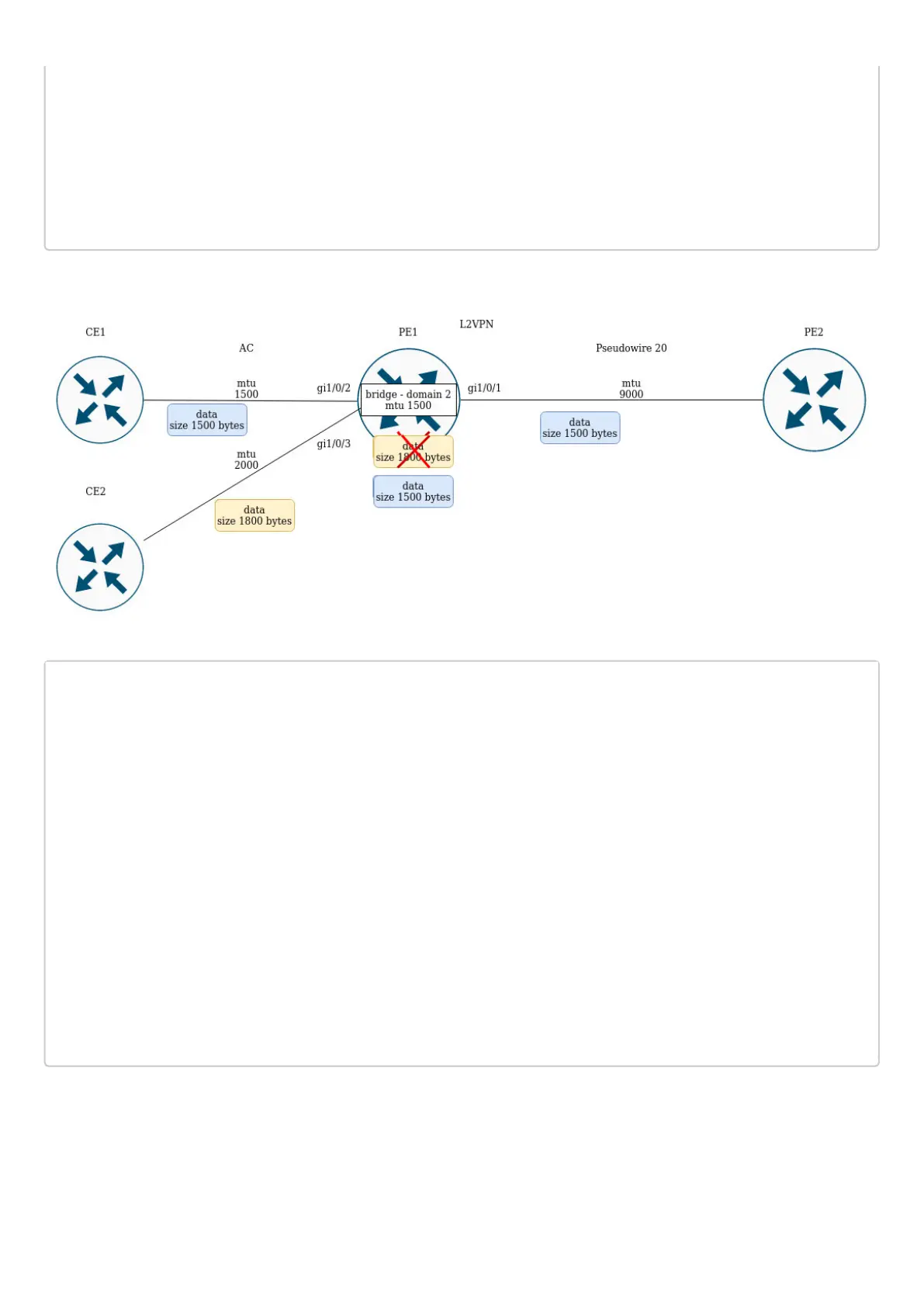ESR series service routers.ESR-Series. User manual
Description: --
Operational state: Up
Administrative state: Up
Supports broadcast: Yes
Supports multicast: Yes
MTU: 2000
MAC address: a8:f9:4b:aa:11:00
Last change: 6 minutes and 42 seconds
Mode: Routerport
Consider the example of traffic passing through the L2VPN service:
PE1 has the following MTU values on the interfaces:
PE1# sh interfaces status
Interface Admin Link MTU MAC address Last change Mode
state state
---------- ----- ----- ------ ------------------ -------------------------
----------
gi1/0/1 Up Up 9000 a8:f9:4b:ac:4d:16 5 hours, 25 minutes and 2
Routerport
seconds
gi1/0/2 Up Up 1500 a8:f9:4b:ac:4d:17 4 days, 4 hours, 49
Switchport
minutes and 40 seconds
gi1/0/3 Up Up 1800 a8:f9:4b:ac:4d:18 4 days, 1 hour, 49
Switchport
minutes and 38 seconds
bridge 2 Up Up 1500 a8:f9:4b:ac:4d:15 1 day, 1 hour, 27 minutes
Routerport
and 28 seconds
CE1 sends packets of 1500 bytes, CE2 sends packets of 1800 bytes respectively. Since the MTU of the bridge
domain is smaller than the MTU of the packet from CE2, the packet from CE2 will be discarded before hitting
the bridge domain. Similar will be the case if the MTU interface facing the mpls-core (gi1/0/1) is less than the
MTU coming from the CE packets (taking into account the mpls header).
